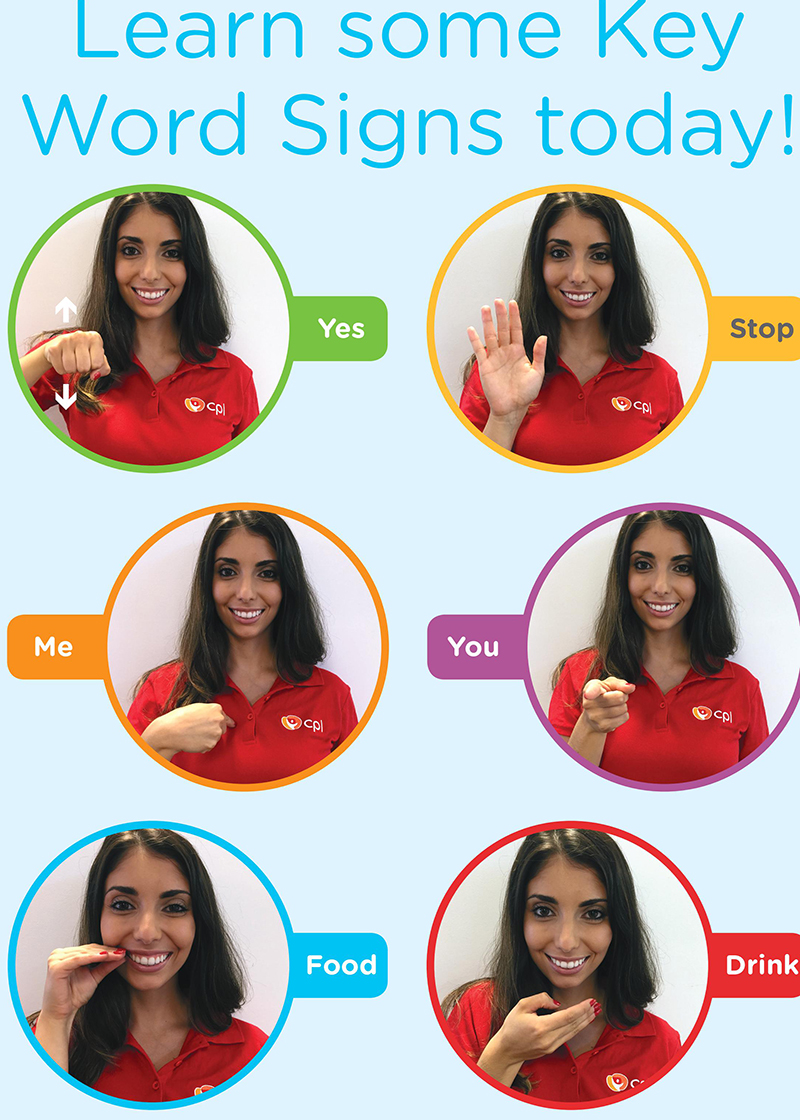A common assumption of people with communication barriers is if they cannot talk or hear, they cannot understand.
The misconception leads to widespread communication breakdowns for the one million Australians living with some form of hearing loss.
A way to help rectify this is by encouraging others to learn the basics of Auslan (Australian Sign Langauge), the recognised language of the deaf community so that it can be promoted throughout the broader communities.
Not just used by the deaf community, Auslan is also used to communicate with people who have complex communications needs.
Senior Speech Pathologist Deb Burmester said Key Word Signing, a simplified version of Auslan using common words was a great place to start for those wanting to learn more or to promote the use of sign language in the wider community.
“For many of our clients, gestures and signs are easier to produce than speech, and it also helps to grow their language development,” Ms Burmester said.
“Key Word Signing is also incredibly effective for people who need an additional layer of visual information to accompany speech – we always encourage people who are verbal to speak while signing.
“By simply signing ‘how are you’ or ‘thank you’, you include people in a conversation. Even if that person responds with a sign you’re not familiar with, it’s important that you still took the time to check-in.”
The differences between sign languages
Auslan
Auslan is a complete language which allows for every word and full sentences to be signed when communicating. In Auslan, there is a sign for every word, and it is the sign form used most publically.
Key Word Signing
Key Word Signing is a simplified version of Auslan. The main difference is when using Key Word Signing, not all the words in a sentence are signed – just the main words that carry the most meaning.



